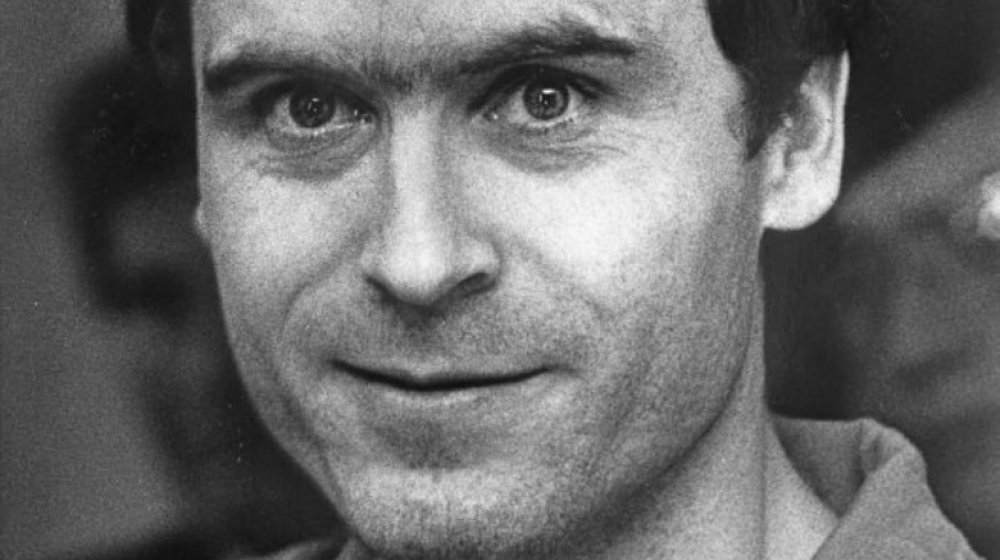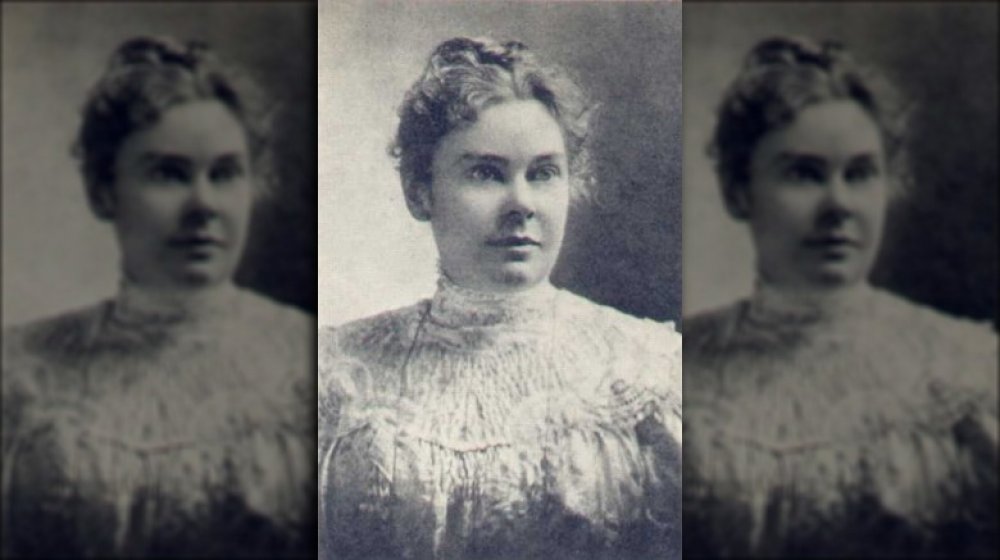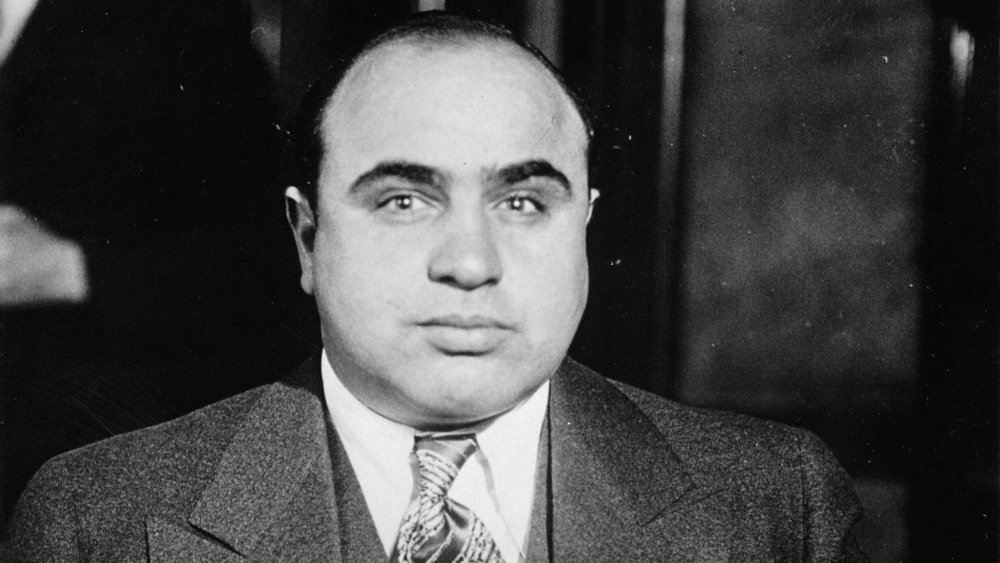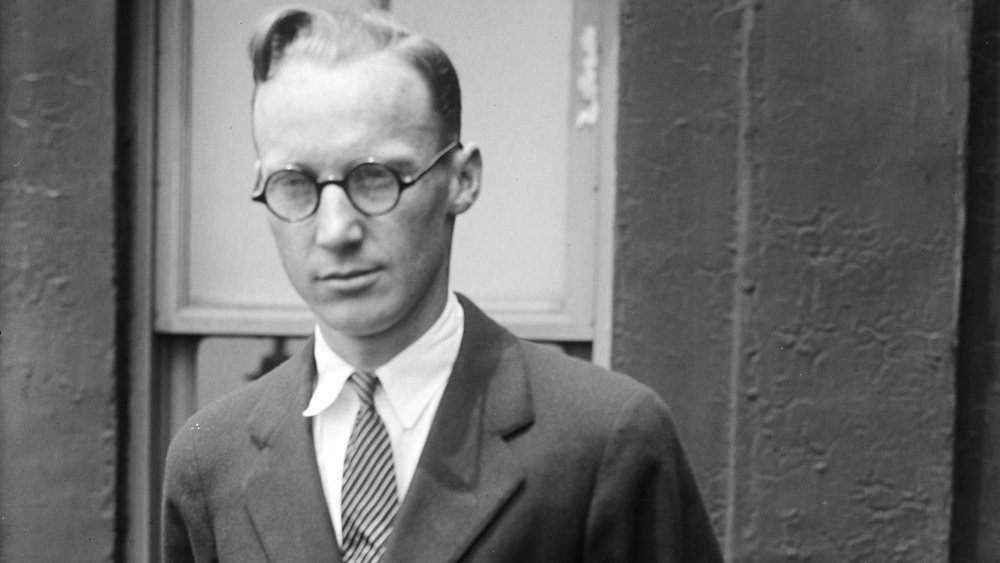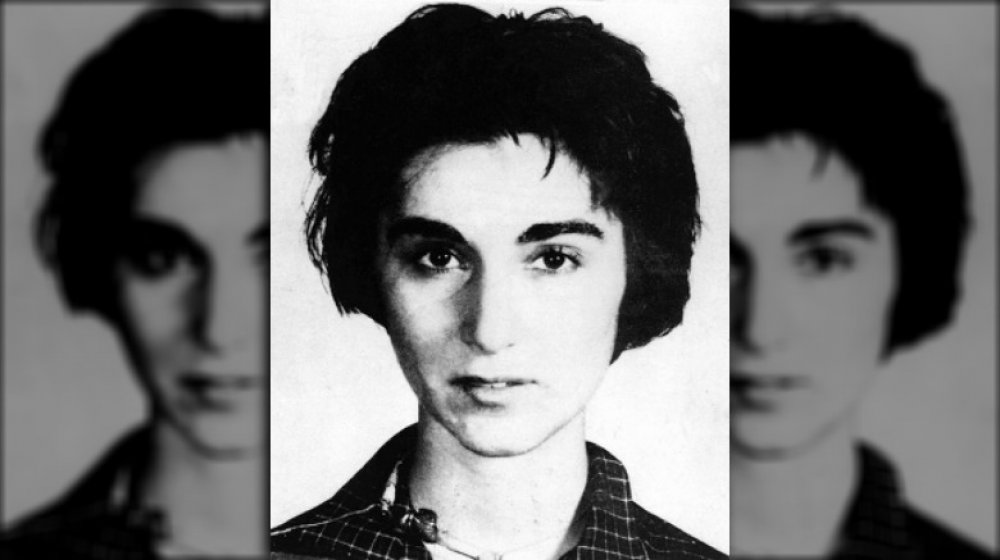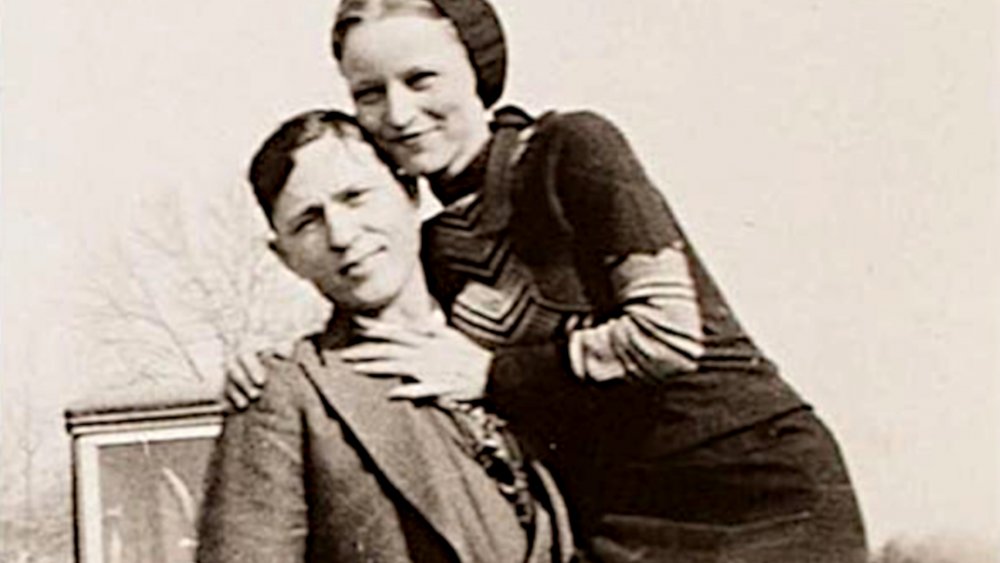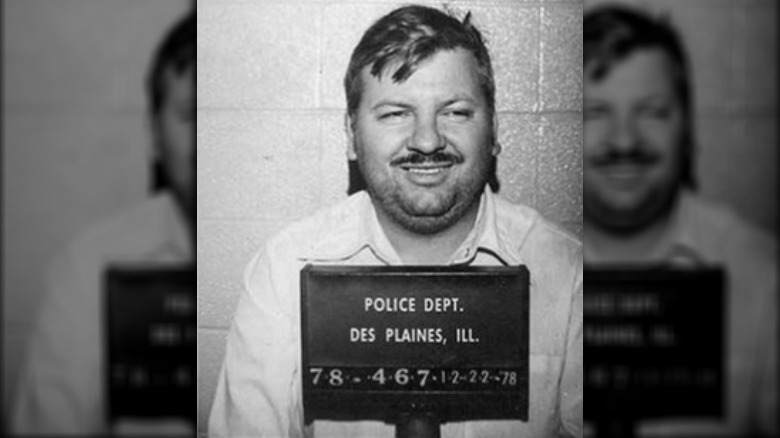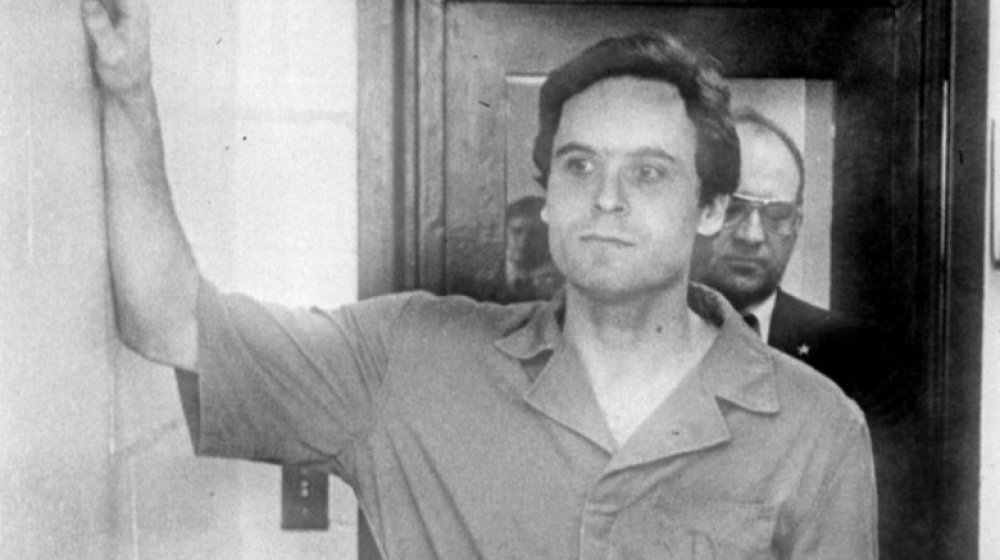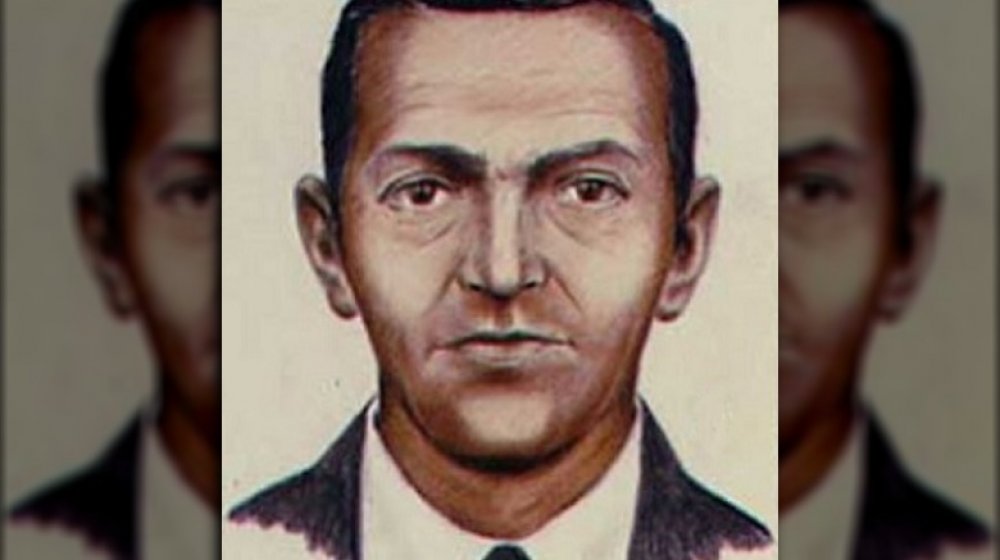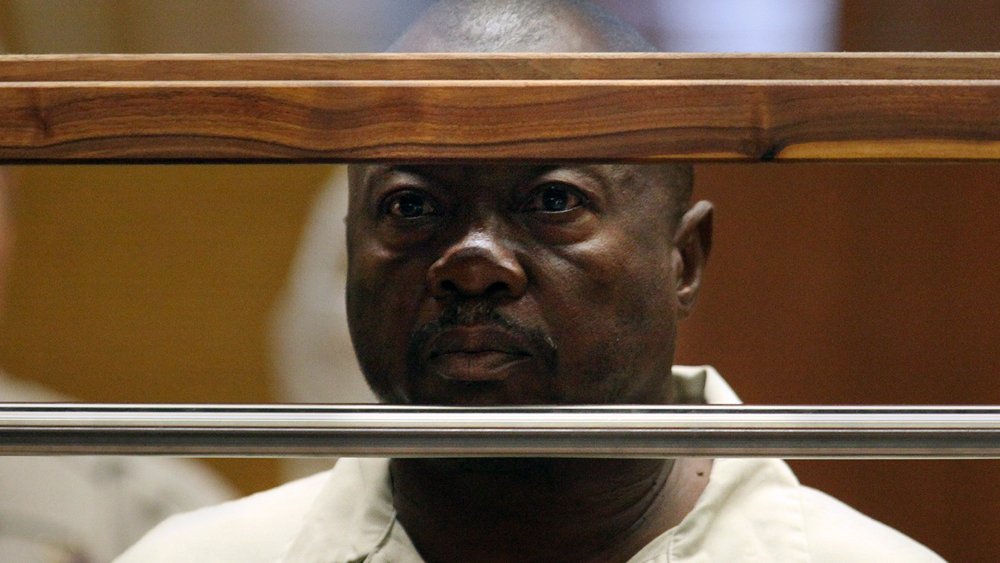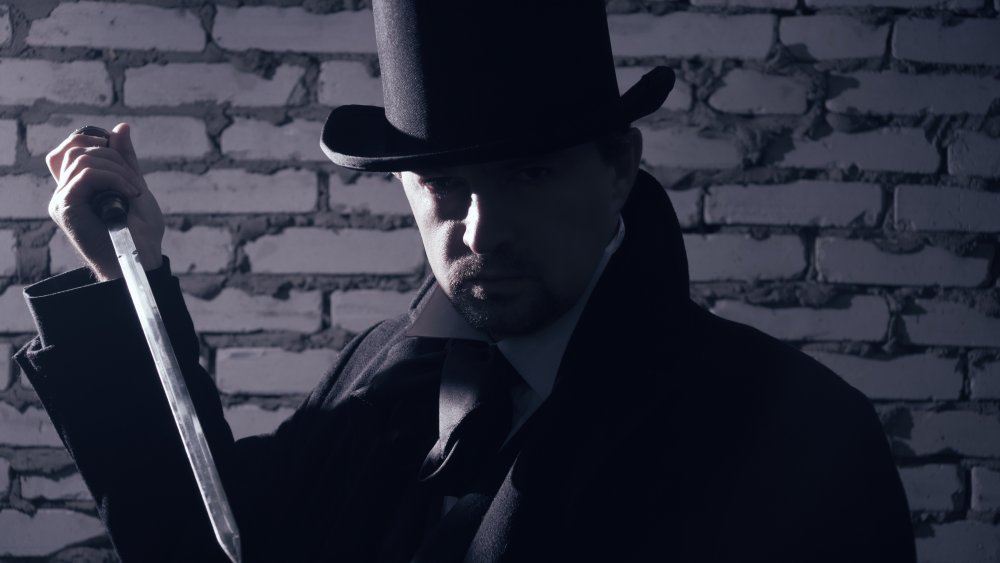Famous Crimes That Everyone Gets Completely Wrong
Everyone loves a good crime story. We especially love true crime, stories about audacious — or horrifying — crimes that actually happened, with extra credit for the unsolved kind. But like any oral history, the stories behind some of the most famous crimes in history can be corrupted over time. This process is accelerated when the errors introduced actually make the crime seem even more interesting. And then those errors become enshrined in internet posts, lending them a sense of veracity. And since a lot of these stories are already incredible to begin with, it's not easy to tell the facts from the crazy stuff that got added in over time.
Chances are you're already familiar with the crimes discussed here — they're some of the most famous criminal acts in history. They're also famous crimes that everyone gets completely wrong because they've become conflated with legend, myth, and simple mistakes that have been repeated over and over again. That's okay, though, we'll set the record straight — and these stories are so incredible that the bare facts are fascinating enough.
Myth: Charles Manson was trying to start a race war
Charles Manson was crazy, right? He was an insane cult leader who believed he was following secret instructions embedded in songs by the Beatles that would spark a race war. He brainwashed a bunch of people and then suddenly unleashed them on the world, resulting in a series of horrific killings.
The "horrific" part is certainly accurate, and Manson was undeniably insane. But the rest of it, as it turns out, is largely myth. As Vox reports, Manson didn't come out of nowhere to ensnare followers — he was a career criminal who lusted after money, fame, and power. He'd spent years in and out of prison before moving to California. In May 1969, Manson murdered a man named Bernard Crowe in a drug deal gone sour, and a few months later, he was involved in another murder when Gary Hinman was killed by Manson follower Bobby Beausoleil. Manson tried to throw police off his scent by staging the second murder scene as a racially motivated killing implicating the Black Panthers.
When Beausoleil was arrested for the murder anyway, Manson set up the Tate-La Bianca murders with instructions to implicate the Panthers again — probably to try and exonerate Beausoleil, since he was in custody and couldn't have been involved. There was probably no sincere belief in a coming race war or secret messages in Beatles songs. It was just an incompetent murderer trying to confuse the police.
Myth: Dan White argued Twinkies made him do it
Dan White was elected to the San Francisco Board of Supervisors in 1977, where he served alongside Harvey Milk, the first openly gay politician elected to office in California. After clashing with Milk and San Francisco mayor George Moscone for more than a year, White resigned from his office. He then changed his mind and asked the mayor to reinstate him, but Moscone refused. White went to City Hall on November 27, 1978, and shot and killed both Milk and Moscone and admitted he'd intended to kill other supervisors as well.
And yet, despite the fact that this was a clear case of premeditated murder, White was convicted of the lesser charge of voluntary manslaughter and sentenced to just seven years in prison. And if you know anything about Dan White's story, you know that the reason he got such a light sentence is the so-called "Twinkie Defense." White's lawyer argued that White had eaten too many Twinkies and, as a result, suffered diminished capacity and could not be held responsible for what was essentially temporary insanity.
Except, that's not what happened at all. As SFGate explains, White's lawyers actually offered a much more nuanced and reasonable defense. They argued that White was suffering from clinical depression, a crippling mental disorder that caused huge changes in his behavior. One manifestation of White's depression, they argued, was a change from his normally fit lifestyle and healthy diet to a sedentary life filled with junk food. Twinkies weren't even mentioned specifically.
Myth: Lizzie Borden killed her parents
Everyone knows the little rhyme: "Lizzie Borden took an ax / And gave her mother forty whacks / When she saw what she had done / She gave her father forty-one." It's an epic crime boiled down to four lines of doggerel, but it seems to tell a simple story. That rhyme and the clear-cut crime it describes have made Lizzie Borden one of the most infamous murderers in history. The easy explanation is that Lizzie was a spinster still living at home with her wealthy father and her despised mother-in-law, and by killing them, she inherited the considerable family fortune while avenging her father's cruelties ... except she might not have been a murderer at all.
As Smithsonian Magazine reminds us, Borden was never actually convicted of the crime. She was arrested and charged but acquitted at trial for lack of evidence. In fact, it took the jury just 90 minutes to come back with a not-guilty verdict. Despite the wealth of circumstantial evidence, there simply was no actual physical evidence that put Lizzie at the murder scene.
There's good reason to believe that Borden killed her parents: She had motive and was at the house when the murders occurred but claimed not to have heard anything, and her movements before and during the crime didn't seem to add up. But in the end, the crime was never proved, and Borden lived the rest of her life an officially innocent woman.
Myth: Eliot Ness brought down Al Capone
We all know the story of Eliot Ness as immortalized in the classic 1987 film The Untouchables. A crusading federal agent risks everything to take on one of the most violent and notorious gangsters of the Prohibition era: Al Capone. Stymied by corruption, Ness and his small team of heroes found an innovative way of nailing Scarface: They charged him with not paying taxes on his immense illegal wealth.
Putting aside the fact that many are surprised to learn that the Internal Revenue Service requires you to declare and pay taxes on all income, even the illegal kind, everyone is impressed with the ingenuity displayed by Ness and his team. The only problem is that Ness had almost nothing to do with it.
As The Washington Post reports, Ness did target Capone's illegal alcohol operations. He led raids and busted up some secret distilleries, but he barely made a scratch in Capone's operations. As Investopedia notes, Al Capone's criminal operation would be worth about $1.3 billion in today's money, and illegal alcohol was just a small part of it. The feeble raids Ness managed to pull off were almost meaningless to Capone's bottom line. The idea to charge Capone with tax evasion came from the Justice Department and the IRS — not Ness or or his people.
Myth: the Scopes Monkey Trial was a legitimate case of censorship
If you've read your history (or Inherit the Wind), you know that the Scopes Monkey trial was a momentous event that epitomized the battle between science and religion. A small-town teacher was arrested when he dared teach evolution in a public school, and two of the world's most famous legal minds descended on the place to make epic speeches and battle for the hearts and minds of Americans.
The truth is actually even more American because it was all just a grift designed to get some money. As Vox details, the whole mess started in 1925, when the state of Tennessee passed the Butler Act, which barred teaching evolution in public schools. The American Civil Liberties Union thought that violated the old separation of church and state principle, so they sought to challenge the law. But first, they needed someone to break it — so they advertised for a hero.
The town of Dayton had hit hard times, and its leaders thought hosting a high-profile trial like that would be great for the local economy. So they approached a popular local math teacher, John Scopes, and convinced him to take one for the team. When he substituted for the biology teacher one day, he used a textbook that contained information on evolution — he later said he wasn't sure how much of it he actually taught. No one cared — he was arrested, and Dayton began preparing for a media circus to come to town and fill their cash registers. No one in Dayton took it seriously.
Myth: 38 people watched Kitty Genovese's murder
The murder of Kitty Genovese in Queens, New York, on March 13, 1964, is one of the most famous crimes in American history. Everyone knows it opened up a conversation about personal responsibility and city living, because Genovese was stabbed multiple times in full view of 38 witnesses, all of whom ignored her screams for help, not wanting to get involved. It cemented the "bystander effect" into pop psychology.
None of that is accurate, however. As The Washington Post explains, not only was the number of witnesses far fewer than 38, but some of the witnesses did, in fact, try to intervene and are credited with chasing the murderer away — though not in time, of course. Two neighbors claim they called the police, and one neighbor, a woman named Sophie Farrar, ran out into the night to help, arriving too late to do anything but hold Genovese while she died.
In other words, while Genovese's murder remains a shocking event, the facts were reported incorrectly. In the ensuing years, her murder was often used as an example of how dangerous urban areas were becoming, with the added horror of timid or uncaring neighbors who wouldn't even come to your aid if you were literally being killed on the street — but it wasn't true.
Myth: Bonnie and Clyde were legendary bank robbers
In part due to their natural glamour and in part due to a slick Hollywood film starring Faye Dunaway and Warren Beatty, Bonnie and Clyde have remained a fixture in pop culture for nearly a century. The popular image is of two extremely attractive people leading a gang of happy crooks on a bank robbing rampage through the Great Depression. They lived large and thumbed their noses at authority right up until they were gunned down in a bloody final stand against the police.
The violent end is certainly true, but the glamour part ... not so much. For a pair of criminals famous for robbing banks, Bonnie Parker and Clyde Barrow were actually terrible at robbing banks.
According to Britannica, the most money Bonnie and Clyde ever got from one of their 15 or so bank robberies was $1,500 – and as History points out, they often only got $5 or $10 from a bank. According to Smithsonian Magazine, their cash flow from their incompetent crime spree often got so bad that they had to rob gumball machines just to buy food. In fact, one of the reasons they kept up their suicidal crime rampage across the country was desperation: Since they never actually got much money, they could never just relax. They always needed more cash just to survive.
Myth: John Wayne Gacy killed people dressed as a clown
Clowns are terrifying. This is scientific fact. So when you hear a rumor that one of the most prolific serial killers of the modern age dressed up as a clown, you immediately believe it.
But as The Atlantic points out, while John Wayne Gacy did volunteer work as a clown at children's hospitals and charities, he didn't dress up as a clown while he was abducting and killing 33 people. In fact, the whole clown angle often obscures what was actually terrifying about Gacy — the fact that he was a beloved member of his community. Psychology Today notes that Gacy was a successful businessman and respected husband and father and was named Man of the Year by his Chicago neighborhood. In other words, forget the clown suit: Gacy was the epitome of the "sociopath next door."
The clown stuff doesn't help, of course — especially since Gacy offered a clue to his sick mind in the pointy, sharp-edged style of his clown makeup. Most clowns have rounded edges to soften their look into something comical and nonthreatening. Gacy's jagged clown sensibility followed him into his artwork — he painted clowns while in prison, and his paintings can fetch a pretty penny today.
Myth: Ted Bundy was a brilliant serial killer
The summary on Ted Bundy is that he was a good-looking, intelligent sociopath who manipulated everyone masterfully. This is a guy that Hollywood thinks resembled Zac Efron, after all, and he admitted to killing at least 30 women between 1974 and 1978. He used his charisma to approach his victims in public places where they felt safe, and he even managed to escape custody not once but twice. Surely, he was a master criminal like you see depicted in the movies.
Actually, he was kind of dumb. Although a master manipulator who was able to charm his victims, as ABC News reports, Bundy was eventually arrested after a really clumsy attempt to kidnap a woman named Carol DaRonch, who escaped and gave his description to the police. A few months later, he was found sitting in his car outside a house where two women lived and was chased by police. When he was pulled over, his car was filled with murder and kidnapping tools and plenty of forensic evidence.
Even his spectacular escapes undermine his image as the evil mastermind. As J.D. Rockefeller notes, the prosecution's case against Bundy was sloppy, and there was an excellent chance he would have been acquitted. Instead, his escapes focused public attention on him and probably made his conviction inevitable.
Myth: D.B. Cooper was an expert pilot and parachutist
In a way, we all want D.B. Cooper to be alive and well somewhere, laughing his way through a retirement funded by one of the most audacious crimes of all time. In 1971, the man donned a pair of cool sunglasses, hijacked a plane, and then jumped out with a bag full of money, never to be seen again. To this day, we're not entirely certain who he was. But he must have been a pilot and possibly a military man, considering how much he knew about planes and jumping out of them.
The truth is, while Cooper's caper was certainly stunning, there's a lot of evidence that he wasn't as expert as he might initially appear. He didn't need to be instructed on how to use the parachutes he was provided and seemed to be aware of the precise altitude the plane needed to maintain for him to jump safely, but as the FBI itself reports, there were signs he was actually an amateur. As New York Magazine notes, he requested "front" and "back" parachutes, which was imprecise and hinted that he wasn't experienced. More importantly, he selected parachutes that couldn't be steered — someone jumping out of a plane over a wooded wilderness would have wanted the ability to steer.
In the end, the $5,800 or so of rotting cash that was found near the Columbia River in 1980 indicates that Cooper probably died after jumping, because he wasn't nearly as smart as he seemed.
Myth: the Grim Sleeper was brilliant
Lonnie David Franklin Jr. was a horrific monster of a human being. Between 1985 and 2007, Franklin killed at least a dozen women, and probably many more. But Franklin evaded arrest until 2010, and he wasn't even a suspect through most of that time, living his life as a free man. On the surface, that looks like an intelligent psychopath carefully covering his tracks and frustrating law enforcement, right?
Actually, as The Huffington Post reports, Franklin's success was probably the result of a combination of police incompetence, racism, and a lack of interest in investigating the deaths of poor, Black sex workers. Vanity Fair notes that the L.A. Police unofficially categorized most of Franklin's crimes as "NHI," which stands for the clearly racist "no human involved" and likely led to a less-than-energetic investigation.
Another factor is that after a failed attempt to kill Enietra Margette Washington in 1988, Franklin took a 14-year break from killing people. A lack of activity like that means no new evidence and can slow down even the most competent investigation. But it's clear that if the LAPD had cared about the poor women Franklin targeted, they could have done a lot more to catch him. He wasn't an evil genius. He was just the beneficiary of systemic racism.
Myth: Jack the Ripper's Victims were all prostitutes
Jack the Ripper is as famous as a criminal can be, even though we still don't know his identity with any certainty, nearly 150 years after the first murder. What everyone knows about the Ripper is that he's one of the earliest serial killers recognized as such, he preyed on sex workers in London's Whitechapel area, and, of course, he was never caught.
But as historian Hallie Rubenhold writes, only some of what you know about Jack the Ripper is actually true. For example, despite the popular depiction of the Ripper as a Victorian dandy assaulting prostitutes, only two of his five victims had ever certifiably been sex workers, and only one — Mary Jane Kelly — was an active sex worker when the Ripper claimed her. Why do we think they were all in the sex trade? Because according to the uptight morals of the time, all of the women were "ruined" morally and thus might as well have been prostitutes.
Two of the women, Polly Nichols and Annie Chapman, no longer lived with their husbands and thus were considered fallen women, and Kate Eddowes lived with men without being married to them and had children outside of marriage. As far as the bluenoses of the time were concerned, they were "ruined" and just as bad as a prostitute.
